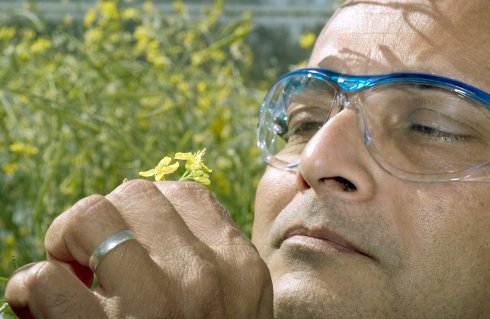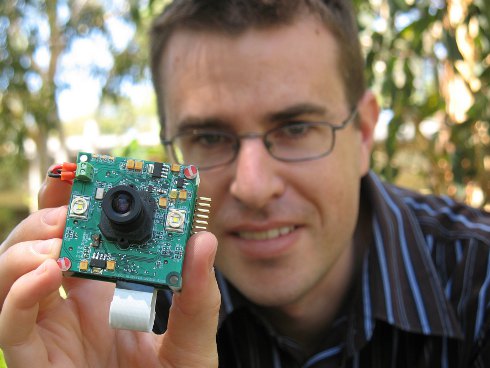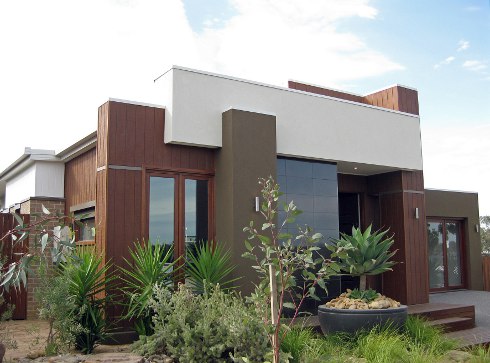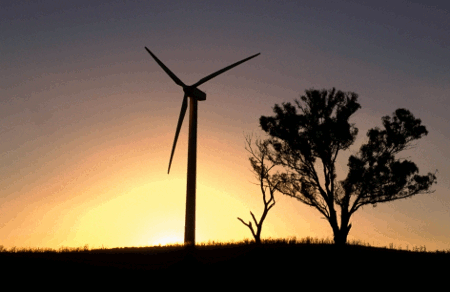
|
Published: 5 September 2011
Australia in 2050
Welcome to 2050, ladies, gentlemen and children. You’ll notice a few changes in how we Australians do things, compared with the turn of the century – all for the better, once we had shed the anxieties that were holding us back. Please accompany me on this brief tour of the new Terra Australis.
First, let’s have a look at what’s driving the economy. Our biggest export, far and away, is knowledge (including technology and advice). And our biggest export sector is climate adaptation: from food production, to water management, to construction of homes and workplaces, urban design and tropical medicine, we used our own natural climate volatility – droughts and flooding rains – as an intellectual springboard for creating a host of new industries able to thrive in the rougher, mid-century conditions. Their products are now in huge demand worldwide.
Our second largest export is energy. This was achieved through the construction of the Energy Superhighway (ESH), an ultra low-loss DC transmission link that originally extended from southeastern to northwestern Australia, enabling diverse sources of clean energy to compete for a global market. Today the ESH radiates across the industrial heartland of Asia itself, as far as northern China, exporting Australian clean energy from solar thermal, hot rock geothermal, integrated gasification combined cycle (clean coal), thorium (safe nuclear), marine and other power facilities, to regions which need it. Three quarters of the photons (from sunlight) harvested in central Australia end up powering factories and cities in Asia.
Our third contribution, and perhaps our greatest so far as human civilisation is concerned, is sustainable, healthy food. From eating a few dozen plants in 2011, Australians now consume several thousand (including many native plants) in a far healthier diet that has reduced by almost half the number of premature deaths attributable to diet-related diseases, the main killer at the start of the century. Our chefs and restaurateurs are acknowledged leaders of the global trend in sustainable, healthy, delicious eating.
Furthermore we have ‘greened’ our great cities so they continually recycle both nutrients and water into the food system, safely and healthily. On roofs, sides of buildings, and open spaces, food plants flourish.
We manage our livestock – mainly cattle, sheep, kangaroos and fish – remotely using electronics and telemetry, achieving clean, sustainable and balanced protein production, even in the deep oceans.
Transport ‘fuel’ has changed dramatically, with solar-hydrogen providing the principal power for long-distance and heavy haulage, biodiesel for farms and remote areas, and mains electricity for urban and personal transport. The solar windjammer has staged a comeback, and Qantas flies on bio-jet fuel produced on large algae farms, fed by society’s organic wastes.
Mining is almost entirely robotic and ‘keyhole’, leaving a minimal footprint. Following the ‘landfill rush’ of the 2030s, there is a strong focus on mining urban waste streams and recycling metals.
One of the main changes you will notice in the new Australia is in defence. After a succession of Asian wars that gained us little more than resentment, we shed our posture of reliance on others’ military empires in favour of an independent stance, akin to Sweden, Switzerland and New Zealand.
In a world roiled by conflict, and mass migration driven by escalating climate impacts and competition for scarce resources, instead of spending its sons and daughters in other people’s wars, Australia’s ‘forward defence’ philosophy has led us to intervene early by providing the food, water, energy and environmental systems that help to stabilise conflicted and stressed regions. This reduces the risks of social collapse, war and resulting refugee tsunamis. As in healthcare, the principal focus is now on prevention rather than ‘cure’. And the principal yield is friendship and economic opportunity.
Back in 2011, the arts, the humanities and culture were the poor cousins of Australian industrial aspiration. Today, the ‘creative economy’ is our largest employer by far. From music to food to fashion and art in all its forms, Australian culture has truly flowered.
We have literature, history, holographic theatre, opera, sport in endless diversity, and ‘fusion art, where teams of creators labour in cyberspace to build utterly new experiences. With most of the ‘dirty work’ of society now performed by automata, the opportunity has emerged to give free rein to the creative instincts of all individuals – almost everyone tries to devote a few hours a day to creating something unique and valuable in this new ‘Athens of the South’.
A shining light in this evolution has been the renaissance of Aboriginal culture and ecological wisdom, which has served as a beacon both for the creative sector and for the sustainable management of Australian landscapes and waters.
Biomedicine has long been a focus of Australian achievement, but in recent decades, with every individual’s genome available at birth, the accent has been on preventive healthcare through life – awareness of one’s own vulnerabilities and guidance in developing a life-plan to minimise them.
Healthcare (and healthy eating) are now woven through all subjects in the curriculum. Every school teaches children how to grow food - and to respect it with the environment that produces it.
New farming systems have greatly reduced the terrestrial footprint of agriculture, enabling large segments of the landscape to be restored to ‘Australian’ condition. Most endangered species are now much more secure, and several – like the thylacine – have been resurrected from remnant genetic material.
Most farms now incorporate a significant percentage of native crops in systems designed to be both climate-proof and productive of healthy foods. The war on invasive species, however, continues, aided by continent-wide networks of monitors.
Disturbed at the ability of the new quantum computers to store and regurgitate even the tiniest details of an individual’s entire life, deeds and words, and the scope for misapplication of this by corporations and the state, Australia is a leader in worldwide efforts to preserve individual liberties in the face of growing global pressures for social control, as the human population continues to swell.
Indeed, individual freedom remains one of the greatest keys to the Australian character, creativity and enterprise.
Finally, the Reserve Bank is no longer the power it used to be for regulating the economy. The source of all the action in 2050 is the Knowledge Bank, established in the 2020s to provide that most precious of human attributes – knowledge – to every citizen for free. This led to radical advances in education, with people working together online in communities of interest or profession, to learn, study and share new understandings and skills.
There are, of course, many other features of Terra Australis 2050 which I’d like to share with you – these are just some highlights. At the time, of course, many people said it could not be done, that it would cost too much money, that it involved too great a change. In the upshot, we know that none of that is true.
Just as the car replaced the horse, the plane replaced the train and vaccines replaced the herbal remedy, Australians as a diverse and enterprising people were able to seize and develop the new opportunities of the 21st century as they emerged. The grounds for every single one of them were already laid in 2011 – all that was wanting was the courage, the vision and the investment to achieve them.
Julian Cribb is a Canberra-based science and technology writer, specialising in agriculture, mining, energy and the environment. He is Adjunct Professor in Science Communication at the University of Technology Sydney and a fellow of the Australian Academy of Technological Sciences and Engineering. During 1996-2002 he was Director, National Awareness, for CSIRO.
A version of this article was originally published by ScienceAlert.com, 23 June 2011.







